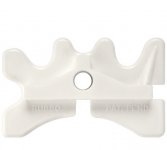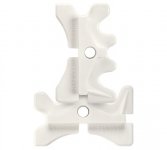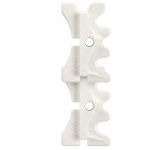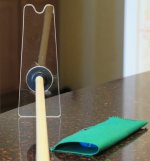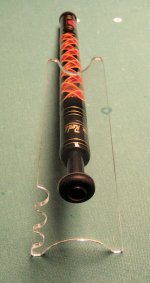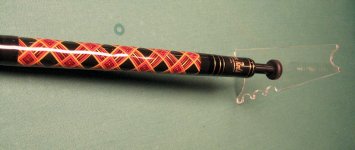Look in your local Yellow Pages (hard copy or online) with the keyword "plastics" and any local dealer or "plastic displays" mfgr. who sells or works with plastic sheets, rods, etc. will definitely sell -- or usually just give you as a freebie -- a remnant scrap piece of nominally 1/4 inch sheet plastic (nowadays slightly less than that size if it's made abroad and comes as 5 mm.) sheet stock.
Any remnant that yields at least an approx. 3" x 9" piece with which to work and extract your new double-height bridge from it. Your local Home Depot or Lowes will sell you a square foot of it, as will most any hardware store that sizes acrylic and polycarbonate (the generic term for Lexan, as acrylic is for Plexiglas and its clones) for folks who frame their own pictures or repair their own windows).
If none of those dealers and plastics forming companies are near to you, alternately you can order a square foot online at quite reasonable prices from any one of numerous googled vendors, but you'll pay a little bit of shipping. A square foot will yield 5 transparent double-height bridges like the one in my photo.
Virtually all woodworking hand tools and woodworking machines work excellently for machining, drilling or sawing plastics, with a few exceptions like hand planes and machine planers. With appropriate blades and tool bits if you know the basics of working with wood, the same skills apply to cutting, filing, and drilling plastics -- easily enough skill to make your own double-height bridge. (Important note: Feed a little slower when you drill plastics, lest the bit seizes and possibly hurts you if the part isn't securely fastened while being machined.)
If all you own are a hacksaw, a flat file and a half-inch (or less) round file, plus a vise (or two clamps) to hold the plastic while you shape it -- that's enough to shape the whole thing, then have a friend with a drill press drill out an appropriately-sized hole in which to insert whatever rubber grommet you already have or have googled to obtain online(they only cost a few cents each.) The hacksaw, a couple files and two clamps can be gotten for less than $5.00 *total* at any "dollar store" near you.
PM me if you need any more helpful info. Glad to help.
Arnaldo
